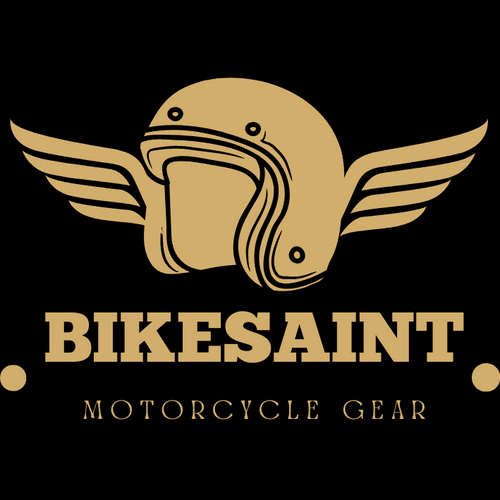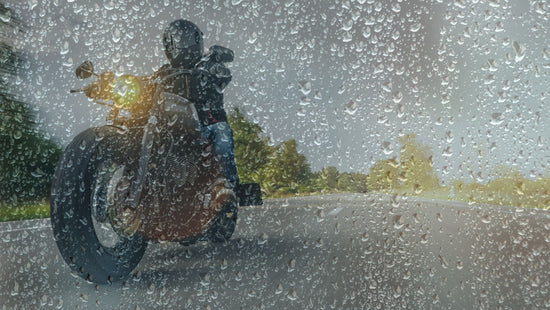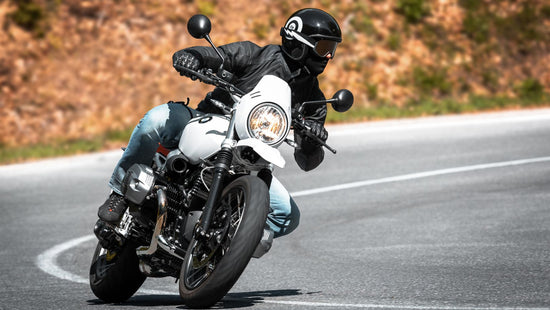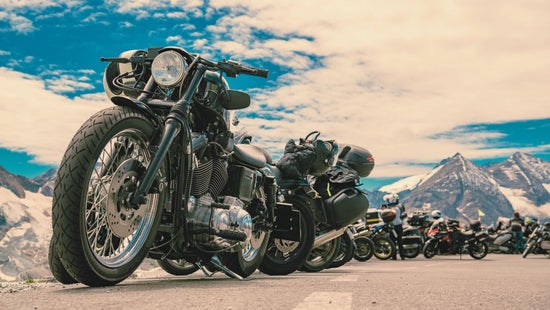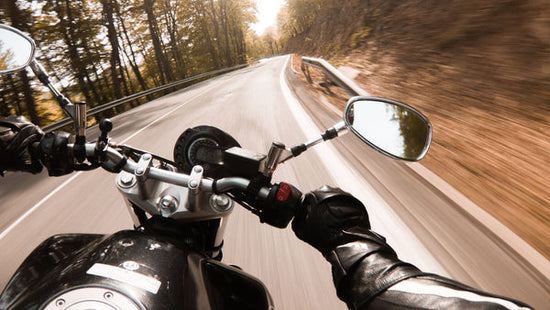

Welcome to our blog post all about motorcycle throttle grip technique! Whether you're a beginner just stepping into the world of motorcycles or an intermediate rider looking to brush up on your skills, understanding how to properly use the throttle is crucial for a safe and exhilarating ride. In this article, we'll explore why mastering the throttle grip is so important, discuss which grip to use, and delve into the proper techniques for rolling on and off the throttle. So, grab your motorbike and let's dive in!
Introduction
Have you ever wondered why proper motorcycle throttle grip technique is so important? You probably did, otherwise you would not be reading this article. Well, let me tell you, it can make a world of difference in your riding experience. The way you hold and control the throttle directly affects your motorbike's acceleration, stability, and overall performance. Not only that, but it also plays a significant role in building your confidence and control on the road. So, whether you're a beginner or an intermediate rider, mastering the art of throttle control is key to becoming a skilled and safe motorcyclist.
Throttel grip settings
Every motorcycle reacts differently to rolling on the throttle. One and two cylinder motorbikes are generally more snappy as the torque comes in lower revs, while four cylinders tend to have less sensitive throttle grips. It also depends whether your motorbike has mechanical or electronic throttle control. However one basic thing that everyone should check is the proper adjustment of the throttle grip. It is recommended for the grip to have about 2mm play, which means you should be able to twist it about this much before the throttle is engaged. Less play could result in applying throttle unintentionally, more could result in inaccuracy when rolling on the throttle grip.
Choosing the Right Grip
Wrist and elbow position
The basic and most important part of the grip technique is maintaining a neutral grip, with a flat wrist, your right hand aligned with your forearm. Some people grab the throttle grip from top, with their wrist bent, expecting to have more room to twist your wrist and roll on the throttle. Although this is true, there are many drawbacks to this type of grip, one of them being uncontrolled acceleration and even wheelies if your body gets pulled back. You see, what happens with this grip when your motorbike accelerates abruptly , you get pulled to the back, which will inevitably straighten your wrist as you try to hold on to the handlebars. This will just open the throttle more and magnify the already bad situation.
The neutral grip with your elbows down is therefore the best technique, not only for the throttle control but for the motorbike maneuvering and cornering as well. It is true that it does not give you so much room to roll on the throttle aggressively as the wrist mobility is limited in each direction. The solution is to move your torso forward, when you wish to accelerate suddenly. Not only is it a natural thing to offset the acceleration force that will be pulling you to the back and to improve the aerodynamics, but your wrists will rise as you move forward, giving you a longer twist available.
Full hand grip vs. two-finger grip
When it comes to motorcycle throttle grip, there are two main techniques that riders use: the full hand grip and the two-finger grip. The full hand grip involves wrapping all four top fingers around the throttle, providing maximum control and stability. This grip is often recommended for beginners as it allows for a stronger grip and more precise control of the throttle. On the other hand, the two-finger grip involves using just the pinky and ring fingers to control the throttle, while the remaining fingers rest on the front brake lever. This grip is popular among more experienced riders who prefer a lighter touch on the throttle and greater freedom of movement for their other fingers. Ultimately, the choice between the two grips comes down to personal preference and comfort, so don't be afraid to experiment and find what works best for you.

Pros and cons of each grip
Although it is a matter of personal preference and many riders use the full grip, there are really no pros of this grip in my opinion, with the exception of off-road motorcycle riding, where you might need a really firm grip in some situations. Remember that it is your lower body that provides the grip to the motorcycle and your arms and hands need to be relaxed. Hold your throttle like an egg - firm enough not to drop it, but do not squeeze hard to break it.
The main advantage of the two finger grip is the position of your index and middle finger on your front brake. This provides additional stability for your wrist and acts as a gauge how much you roll on and off the throttle. Another big advantage of this grip is that you are ready to brake at any time. With a full grip you need to not only extend your fingers, but you have to change your grip, because your fingers are under the front brake lever in the starting position. This will take precious time and might result in an abrupt application of the front brake instead of a gradual engagement, especially if you will grab the brake lever with all four fingers. The least of your problems is that you will end up holding your throttle only with a thumb and you are not ready to roll on the throttle again once the braking is over and that you have to do the same charade in the reverse order.
Rolling On the Throttle
When it comes to throttle control, smoothness is key. Gradually roll on the throttle, allowing power to flow smoothly through the motorbike's engine. Not only does this provide a more comfortable ride, but it also minimizes the risk of losing control over your motorbike. Avoiding Sudden Jerks: A sudden jerk of the throttle is the ultimate enemy of smooth riding. It can cause your motorcycle to lurch forward unexpectedly, compromising your balance and potentially leading to accidents. To avoid these sudden jerks, practice applying throttle pressure gradually and consistently. This will allow your motorbike to respond predictably, giving you greater control and confidence on the road.
Rolling on the throttle when cornering
The biggest risk with rolling on the throttle improperly comes with cornering. When you lean your motorcycle, naturally you have less grip available and few things with improperly rolling on the throttle can make you lose traction.
First of all, never use your front brake and throttle at the same time, or you will lose your front wheel grip. This is my suggestion but there are other views on overlaping throttle and front brake. Second, first lean the motorcycle and then gradually roll on the throttle. Never add more lean angle while adding more throttle. This might ultimately result in your wheel wheel losing grip and low side crash. Even worse is a situation when you start losing grip and then suddenly regain it while rolling abruptly on the throttle. The high side crash is so much worse and more violent, as the rider ends up flying over the motorbike. The tyres and the suspension need some time to adjust, that is why abrupt changes poses risk.

Rolling Off the Throttle
Rolling off the throttle is just as important as rolling on the throttle when it comes to proper motorcycle control. When you release the throttle, it's crucial to do so smoothly and gradually. Abruptly letting go of the throttle can cause the motorbike to jerk and destabilize, potentially leading to loss of control and accidents. By rolling off the throttle gradually, you give the motorbike time to adjust and maintain stability. This is especially important when cornering and your motorcycle is already leaned. Your grip is smaller and your suspension cannot do its job so well as if the motorbike is upright. A sudden throttle release can disrupt your balance and traction. So remember, always be mindful of how you roll off the throttle, ensuring a smooth and controlled release for a safer and more enjoyable ride.
Common Mistakes and Consequences
Failing to master proper throttle techniques can have severe consequences. Abrupt application of throttle can lead to traction loss, causing the rear wheel to spin out and potentially resulting in a loss of control. On the other hand, rolling off the throttle too quickly can cause the motorbike's weight to shift forward, unsettling the suspension and compromising stability. Moreover, inexperienced riders may inadvertently grab the brake lever when intending to roll on the throttle, leading to sudden and unexpected deceleration. Understanding and practicing proper throttle control will help you avoid these pitfalls and keep your rides safe and enjoyable.
Tips for Practicing and Improving Throttle Control
Slow-speed maneuvers in a controlled environment are a crucial part of developing your motorcycle riding skills. This is where you can practice and hone your throttle control techniques. By starting off in a safe and controlled space, such as an empty parking lot, you have the freedom to experiment and gain confidence in your abilities. Take the time to understand how your motorcycle responds to your throttle inputs and learn the nuances of the motorbike's power delivery. Utilizing throttle control exercises during these slow-speed maneuvers will help you develop a sensitive touch and smooth control over the throttle. Gradually pushing your personal limits in a controlled environment will not only improve your handling skills but also help you become more comfortable with the throttle.
Conclusion to Motorcycle Throttle Grip Techniques
In conclusion, mastering proper throttle techniques is essential for every motorcyclist, whether you are a beginner or an intermediate rider. By understanding the importance of throttle control, using the correct grip, and knowing when and how to roll on and off the throttle, you can greatly improve your riding experience and ensure your safety on the road. Remember to always be mindful of your throttle inputs, especially when cornering or in low-speed maneuvering situations. With practice and patience, you can become a confident and skilled rider, making every ride safer and more enjoyable. So, embrace the throttle, but also respect it, and ride on with passion and precision. Keep the rubber side down and enjoy the open road!
What is the correct way to grip a motorcycle throttle?
The proper grip is relaxed and not too tight. Flat wrist, elbows down, two fingers on the fron brake lever.
What is the most common mistake when controlling the throttle?
The Most Common Mistake: The Death Grip. Picture this: you're cruising down the open road on your motorcycle, wind in your face, and the freedom to explore new horizons. Suddenly, you find yourself clinging onto the handlebars for dear life, gripping the throttle with all your might. This, my friends, is known as the "Death Grip" - the most common mistake riders make when controlling the throttle. Maintaining a tight grip on the throttle is counterproductive and can lead to a host of issues. When your hand muscles are tense, it adversely affects your ability to make precise adjustments to the throttle. This lack of finesse can result in jerky throttle inputs, difficulty in maintaining a consistent speed, and an increased risk of losing control over your motorcycle. Moreover, the death grip can cause unnecessary fatigue, making your ride less enjoyable and potentially dangerous.
